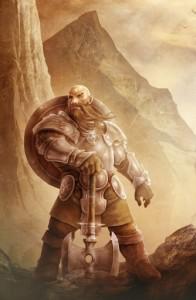Before there were materialist explanations of nature’s unpredictable fury, there were stories. These stories were not mere entertainment, but were attempts to make sense of that which was inexplicable. The world is of course an unpredictable place. We were powerfully reminded of this but one month ago, as an earthquake and tsunami devastated Japan.
Modern Japanese understand what happened in scientific terms — crustal plates, subduction zones, and water columns — explain what occurred. But not more than a few hundred years ago, the explanation would have been much different: sea spirits had been angered and were punishing the people.
The Japanese are not alone in this respect. Most humans throughout history have used stories in similar fashion. The resulting oral traditions “are cultural forms that organize perceptions about the world” (Cruikshank 1992:40). Although stories are used to acquire, organize, store, and share information relevant to survival, they are more than this. They also enable people to “make sense of unpredictable destructive natural forces in their landscape” (McMillan & Hutchinson 2002:44).
Like the Japanese, indigenous peoples living along America’s Northwest Coast (near the Cascadia subduction zone) experienced devastating earthquakes and tsunamis. And like pre-modern Japanese, many Northwest Coast peoples told stories about these events and their supposed causes. For many tribes in this area, the explanation was simple: when the mountain dwarfs danced, the earth shook. Those who paid no heed to this shaking — i.e., those who failed to run to high ground or did not lash sturdy canoes to tall trees — were inevitably doomed by the oncoming wall of water.
In “When the Mountain Dwarfs Danced: Aboriginal Traditions of Paleoseismic Events along the Cascadia Subduction Zone of Western North America,” ethnohistorians Alan McMillan and Ian Hutchinson have collected many of these stories and concluded that many of them recount historically known and archaeologically detectable events. Most involved supernatural beings or dwarfs:
The mountain dwarfs, in Nuu-chah-nulth belief, were responsible for the earth shaking. In discussing supernatural beings recognized by the Nuuchah-nulth, Philip Drucker (1951:154) states: ‘‘There were also dwarfs, who had houses inside of mountains, where they enticed the unwary to dance with them around and around a great wooden drum. Sooner or later he [the unwary visitor] stumbled against the drum, and became afflicted with a peculiar disease called ‘‘earthquake foot’’— every time he took a step the ground shook.

In the Bella Coola Valley, the Nuxalk had a different explanation: “According to their beliefs, the earth is held in place with strong ropes held by a giant supernatural being. Earthquakes occur when the ropes slip from this being’s grasp or when he moves his hands to get a better grip.”
What I find most interesting about these stories is that they demonstrate the fundamental human need for explanation. Any explanation is better than none; the terror of the unknown and unpredictable is too much for most. In addition to providing teleological solace, most of the stories also provide instruction: what to expect when the dwarfs dance and what action needs to be taken. These stories are not just stories; they look much like adaptations.
References:
McMillan, A. (2002). When the Mountain Dwarfs Danced: Aboriginal Traditions of Paleoseismic Events along the Cascadia Subduction Zone of Western North America. Ethnohistory, 49 (1), 41-68 DOI: 10.1215/00141801-49-1-41
Cruikshank, Julie (1992). Invention of Anthropology in British Columbia’s Supreme Court: Oral Tradition as Evidence in Delgamuukw v. B.C. BC Studies (95), 25-42

